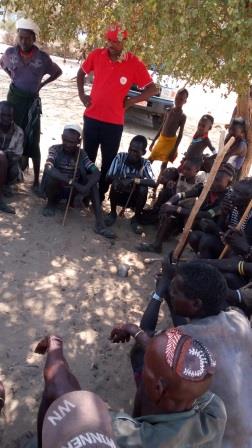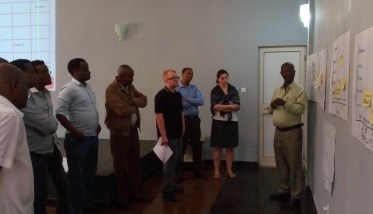Ethiopia is currently experiencing a number of disasters, including drought and conflict, especially in Eastern and Southern Ethiopia are currently in the grip of a
severe drought, the result of failed spring and autumn rains in 2016.

According to a recent report from the Government of Ethiopia and the UN Office for Coordination for Humanitarian Affairs (OCHA), 5.6 million people will require emergency food assistance this year due to these
silent disasters. In addition, 2.7 million children, pregnant women, as well as women who are breast-feeding children will require additional support to treat acute malnutrition; 9.2 people will require Water, Sanitation and Hygiene (WASH) assistance; and 1.9 million households will need livestock support. The Government and partners also estimate that 303, 000 children will become severely acutely malnourished and some 2 million school children are going to require school feeding and school WASH during the year.
As part of the Government of Canada funded Strengthening Emergency Response in Africa (SERA) program, Canadian Red Cross Disaster Risk Management Advisor Carla Taylor travelled to Ethiopia to support the Ethiopia Red Cross' ability to develop contingency plans, specifically for the emerging drought crisis.
The Canadian Red Cross has been supporting Ethiopia Red Cross in recent months through activities such as training national-level and branch-level disaster responders. The responders were trained in collaboration with International Committee of the Red Cross, in assessment methods and various technical relief service areas.
In early January, two members of the recently trained responders were deployed to complete an emergency assessment for the emerging drought in Southern Ethiopia, specifically in South Omo and Wolavita, in the SNNP Region. This was the first time the Ethiopia Red Cross was able to use branch-level responders to complete an assessment like this.

This assessment was used as part of a contingency planning workshop that was held by the Canadian Red Cross in January. The workshop used the real-world emerging crisis to train Ethiopia Red Cross staff from across the country on how to collect evidence and best predict and plan for evolving crises to enable a better response. Carla, noted that, “it was very rewarding to work with the branch and regional staff of Ethiopia Red Cross – they have such a deep understanding of the issues their communities are facing. They are also the best placed to be discussing what actions have worked in the past, and what may be needed if this crisis continues to worsen.”
These workshop discussions will now help build a regional contingency plan for the Southern Ethiopia drought. In the coming months, another workshop will help enhance the Ethiopia Red Cross Society’s ability to coordinate and develop a comprehensive response plan.
By taking a field-level approach when providing support to local and national responders, there is an increase in engagement and more effectiveness in how aid funding gets used. The wide network of branch, regional and national responders with Ethiopian Red Cross Society are perhaps the best placed on the ground to reach remote areas or areas in crisis across their country.
The SERA program is a way that the Canadian Red Cross can support and empower the Ethiopia Red Cross Society to increase skills and resources for their first responders.
Read more about the current drought in Africa here.